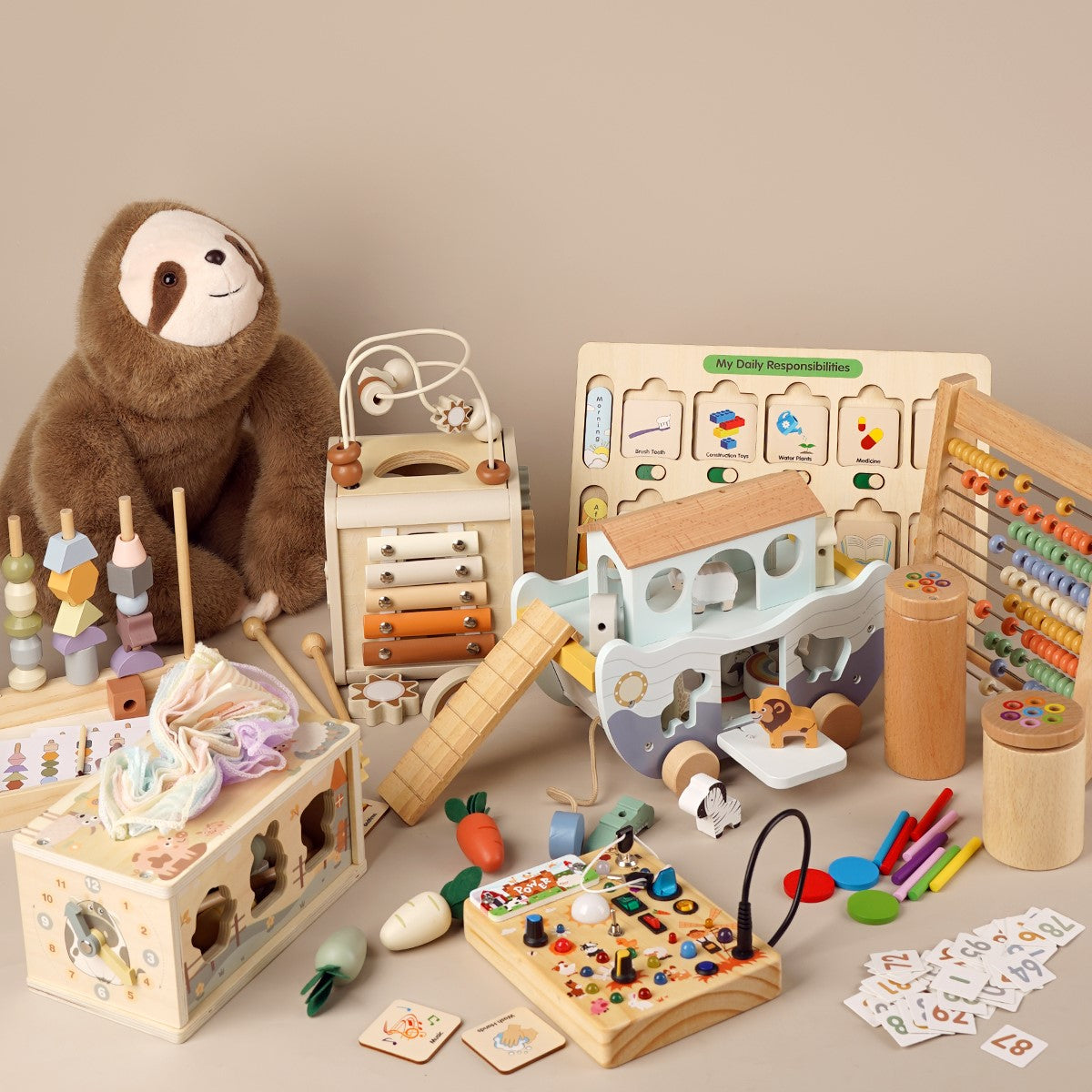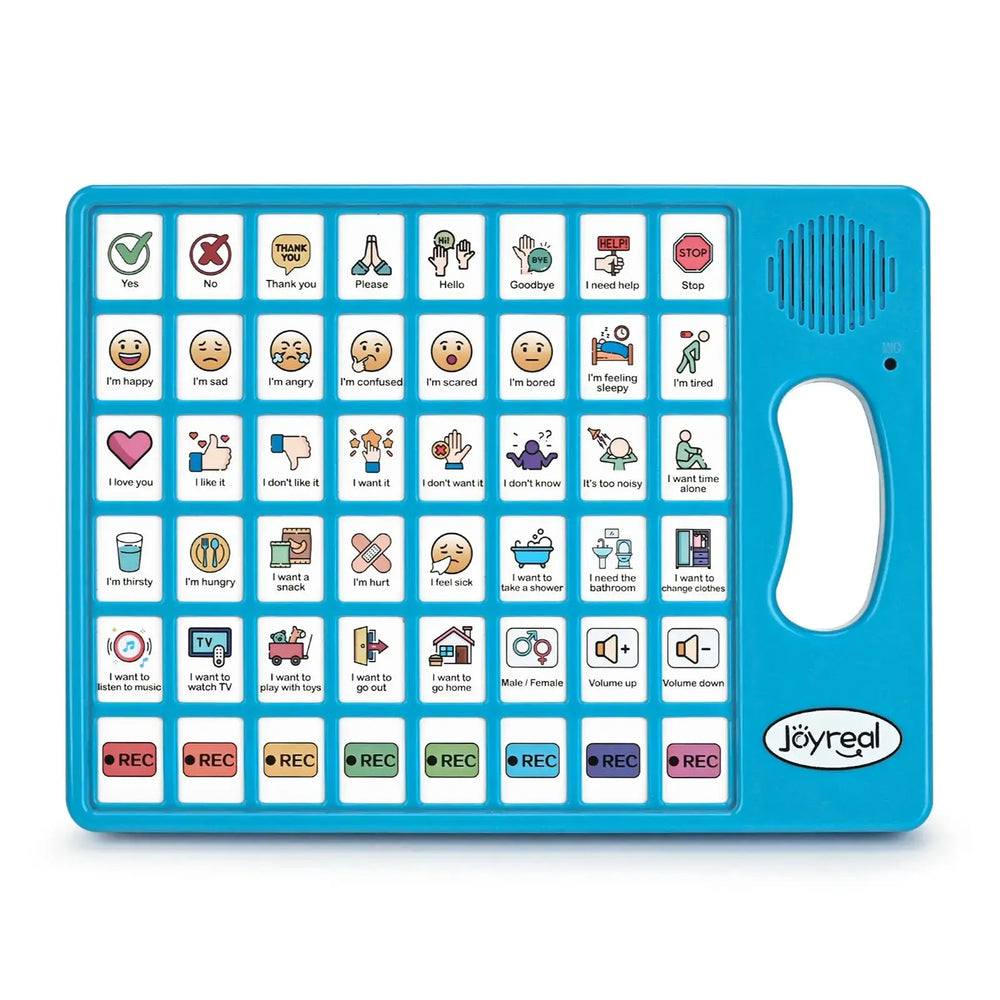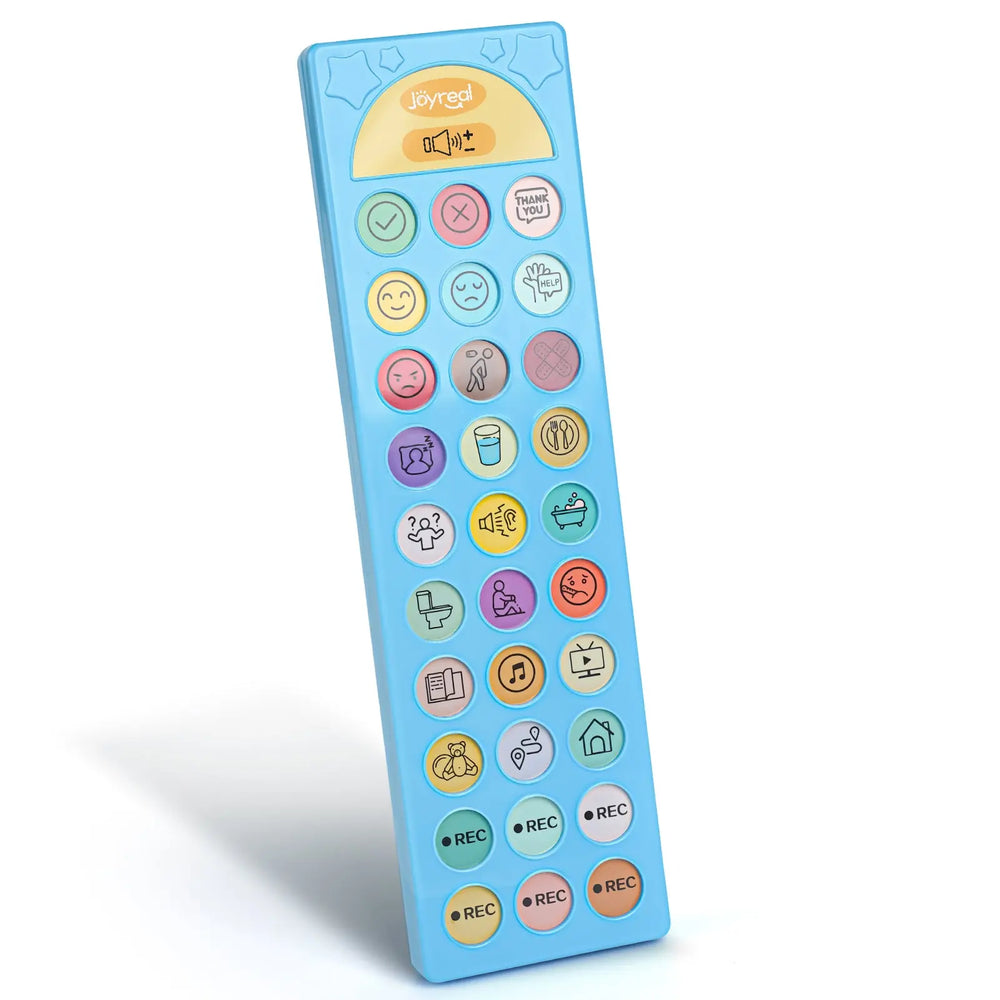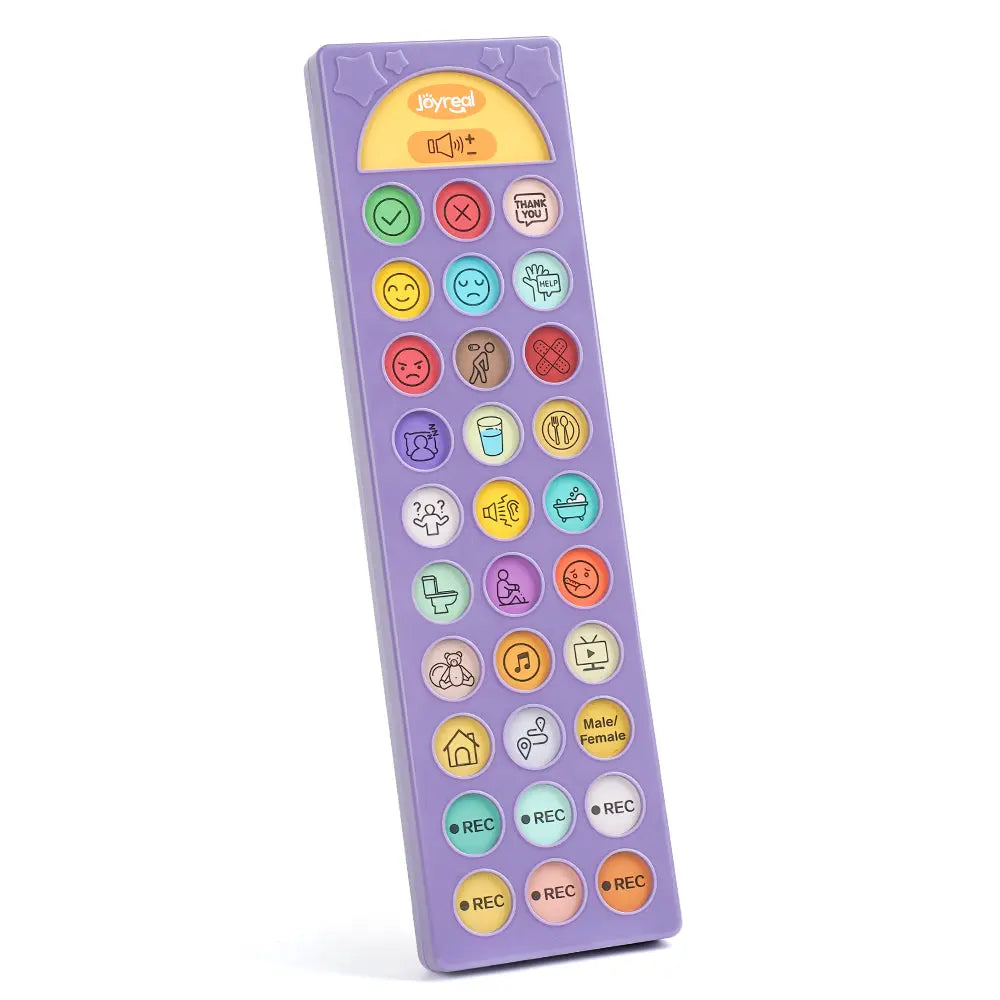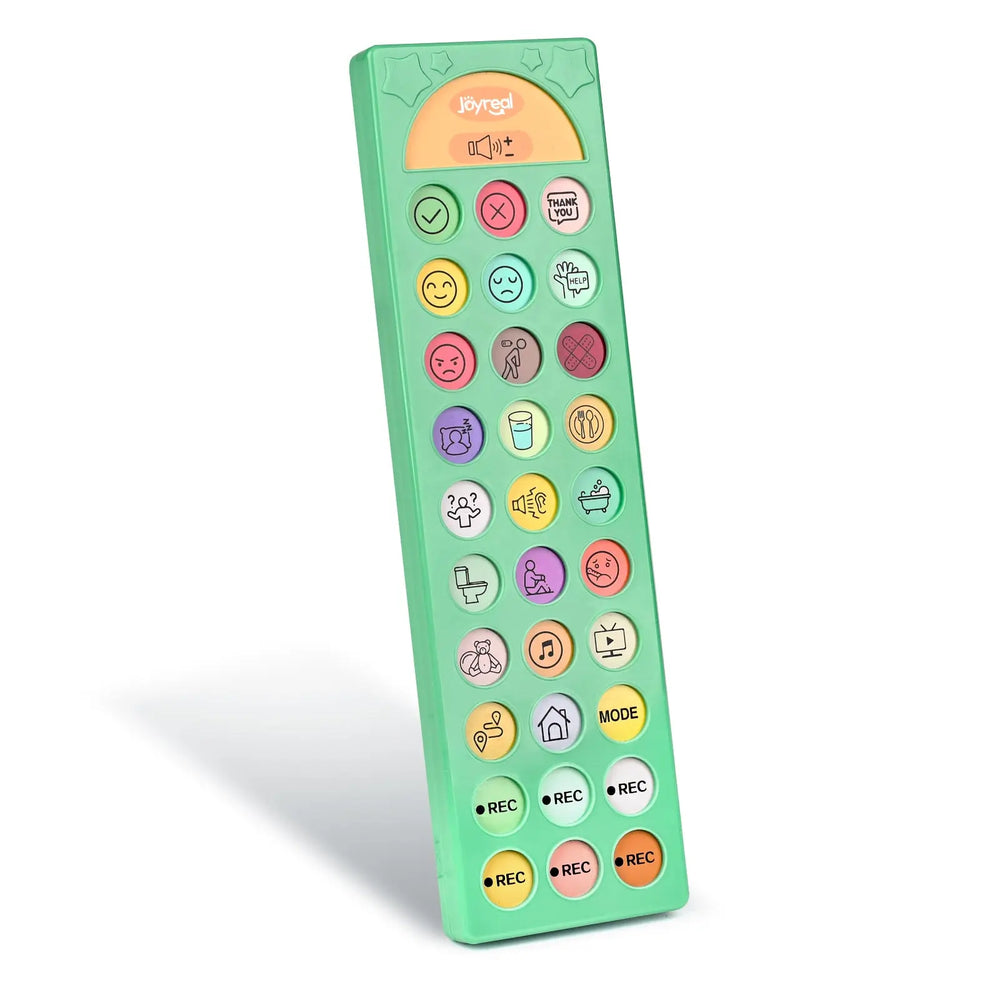What Age Range Is the Joyreal AAC Device for?

When someone struggles to speak or express their thoughts, a good augmentative and alternative communication (AAC) device can make all the difference. The Joyreal AAC device is designed as a dedicated communication aid, offering a voice and platform for users of varying ages. The question we’ll answer here is: what age range is it for, and how does it adapt to different developmental and life stages?
What is the Joyreal AAC Device?
The Joyreal AAC device is an augmentative and alternative communication tool. In simple terms, it’s a device that lets someone communicate through pressing buttons, recorded voice output, picture symbols and sometimes male/female voice switching. According to product listings, some versions of Joyreal’s device feature 24 to 37 “talking buttons”, multiple programmable buttons, adjustable volume, and customizable voice options.
Key features include:
- Pre-installed phrases with picture icons (helping nonverbal or minimally verbal users).
- Programmable buttons so the user or caregiver can record personalized messages. Voice switching (male/female) and adjustable volume, making it usable in various settings.
- Lightweight, portable design for use at home, school or travel.
In essence, Joyreal AAC is a bridge: it helps someone who cannot rely solely on spoken language to have a voice.
Why Age Range Matters in AAC Devices
Developmental Communication Stages
Human communication evolves significantly from toddlerhood to adulthood. A toddler may need to say “want more” or “no”, while a teenager may need to express opinions, social feelings or operate in a classroom. Choosing an aac communication device that matches the user’s age and communication stage is important because:
- The device must have age-appropriate vocabulary and icons.
- The physical design (size of buttons, durability) must fit the age and motor skills of the user.
- The social environment (playground vs classroom vs workplace) changes with age, so the device must adapt.
Picking the Right Device for the Stage
If a device is too basic for a teenager it may feel limiting; if a device is too complex for a young child it may frustrate them. The Joyreal blog emphasises this: “We design intuitive, durable, child-friendly AAC devices, tailored to different learning stages and needs.”
In short: Age (and corresponding developmental stage) affects vocabulary needs, device usability, portability, social fit and long-term growth.
Recommended Age Ranges for Joyreal AAC
Early Childhood (Toddlers & Preschool, Ages 1–5)
When my child was still learning to babble—or showing signs of delayed speech—the Joyreal AAC device became an incredible help to us.
For children between 1 and 5 years old, the Joyreal Mini AAC is the perfect introduction to communication. Its large buttons, clear picture icons, and simple interface make it easy for little hands to use. Even kids who haven’t learned to spell or read yet can express their thoughts by pressing familiar symbols.
What I love most is the voice recording feature. I can record familiar sounds and everyday phrases like “I’m hungry,” “Mommy,” or “One more time.” These little moments of communication turn daily routines and playtime into learning opportunities. Over time, I noticed how it helped my child build a natural awareness of language.
- Recommended Age: 1–5 years
-
Features: Large buttons, picture-based communication, and simple voice recording that helps little ones take their first step into speech.
Primary School Age (Ages 6–12)
When my child started primary school, everything changed — their world became bigger, and so did their desire to express themselves.
At this age, children aren’t just learning to speak; they’re learning to connect, collaborate, and share ideas in more than one language. That’s when the Joyreal Bilingual Learning AAC Board became an essential part of our everyday life.
The Joyreal Bilingual Learning AAC Board truly shines for children aged 6 to 12, when social communication and emotional understanding start to flourish. It didn’t just help my child participate in classroom discussions and express emotions clearly — it also made it easy to record and personalize bilingual messages in both English and Spanish, helping bridge home and school environments.
For example, on our Joyreal board, we recorded simple bilingual phrases such as:
- “I want to play blocks.” — Quiero jugar con los bloques.
- “I feel happy today.” — Me siento feliz hoy.
These short yet powerful phrases gave my child a real voice — one that could be understood and celebrated in both English and Spanish classrooms.
It not only supported their language development but also strengthened their cultural confidence, allowing them to switch between languages naturally depending on the situation.
Joyreal beautifully describes this stage as “Expanding speech and social skills.” I couldn’t agree more. As my child’s vocabulary and interactions grew, the Joyreal Bilingual Learning AAC Board gave them the confidence to speak up, share opinions, and build meaningful relationships with teachers and classmates.
With every press of a button, I could see my child’s independence and self-esteem blossom. Teachers understood them more easily, peers became more inclusive, and that sense of belonging made all the difference.
- Recommended Age: 6–12 years
-
Key Features of the Joyreal Bilingual Learning AAC Board:
- Bilingual Expression: Supports English–Spanish communication for home, school, and therapy.
- Customizable Voice Messages: Record personalized bilingual phrases for everyday routines and classroom use.
- Expanded Vocabulary Options: Encourages children to move from simple words to full sentences in both languages.
- Intuitive, Child-Friendly Design: Large, colorful buttons promote independent use and language exploration.
- Durable and Portable: Perfect for classrooms, speech therapy, or family outings.
-
Supports Cognitive and Cultural Growth: Helps children strengthen both languages while embracing cultural identity.
Since introducing the Joyreal Bilingual Learning AAC Board, I’ve watched my child transform from a quiet observer into a confident bilingual communicator. They now express themselves freely — in English with teachers, in Spanish with grandparents — and with a smile that says, “I belong in both worlds.
- 💬 “The Joyreal Bilingual Learning AAC Board doesn’t just teach language — it builds connection, confidence, and cultural pride.”
Teenagers & Young Adults (Ages 13–18)
As children grow into teenagers, communication takes on a deeper, more personal meaning.
It’s no longer just about expressing needs — it’s about expressing identity, values, and individual voice.
Among the students I’ve worked with, many teens use the Joyreal AAC Communication Board to share their opinions, humor, and unique personalities.
The board’s customizable voice settings, gender-voice options, and modern layout help them maintain authenticity and confidence in every social setting — whether they’re chatting with friends, participating in class, or posting online.
Joyreal describes this stage beautifully:
- 13–18 years: Finding independence and an authentic voice.
And it’s so true — at this age, users don’t just want to be heard; they want to be understood and respected.
The Joyreal AAC Communication Board gives them exactly that — a safe, empowering platform to express who they are, not just what they need.
It encourages self-expression, supports emotional growth, and builds social independence — three essential pillars for every young adult learning to find their place in the world.
- Recommended Age: 13–18 years
-
Key Features of the Joyreal AAC Communication Board for Teens:
- Personalized Voices: Choose tone, pitch, and style to reflect personality.
- Portable, Stylish Design: Perfect for school, social events, and everyday use.
- Customizable Message Grids: Express humor, opinions, and individuality.
- Supports Teen Independence: Encourages ownership and confidence in self-expression.
- Bridges Social Gaps: Helps teens connect with peers and educato
I’ve seen how the Joyreal AAC Communication Board transforms teenage communication — from hesitation to confidence, from silence to self-expression.
It’s more than just a speech device; it’s a voice of identity.
- 💬 “Joyreal AAC gives teens the power not only to speak — but to be truly seen and understood.”
Adults & Seniors (Ages 19 and Above)
Many people think AAC devices are only for children—but that’s far from the truth.
I’ve worked with several adults recovering from stroke or brain injury, and the Joyreal AAC device has helped them rediscover the joy of “speaking” again. It stores pre-recorded messages, plays common phrases, and supports easy access through large buttons and adjustable volume, which are especially useful for older users.
For seniors (60+), the simple interface, durable build, and voice reminder features make Joyreal AAC both practical and comforting. I’ve seen firsthand how it doesn’t just restore communication—it restores dignity and independence.
- Recommended Age: 19 years and older (including seniors)
- Features: Supports speech recovery, rehabilitation, and daily communication with large, easy-to-press buttons and high-volume options ideal for adults and older users.
Limitations & When to Seek Professional Guidance
While the Joyreal AAC device is versatile, it’s important to remember:
- It’s not a toy but a serious communication aid.
- A device alone does not ensure communication growth — speech-language pathologist (SLP) input is essential to design vocabulary, train usage and monitor progress.
- The device may need to be supplemented by higher-tech AAC solutions depending on individual needs (for example for high-vocabulary users or those needing dynamic display).
- Age-range labels are guidelines — individual ability, motor skills, cognition and environment matter more than age alone.
Conclusion and Final Thoughts
In summary, the Joyreal AAC device is not limited to a narrow age range — rather, it is designed to span the developmental spectrum from toddlers through to seniors. Specifically:
- For toddlers/preschool (1-5 years): simple button, picture-icon aids.
- For school-aged children (6-12 years): expanded vocabulary, social participation.
- For teens/young adults (13-18 years): autonomy, self-expression, social identity.
- For adults & seniors (19 + years): recovery of voice, communication support, dignity.
Choosing the right age-appropriate model matters because physical size, vocabulary complexity, environment and social needs change with age. With proper assessment and integration by professionals (therapists, educators, caregivers), the Joyreal AAC device can truly become a “voice” for those who need one — regardless of age.
Maybe it will be helpful for you:
Recent Post

From Noise to Growth: Why Every Toddler Needs a Joyreal Wooden Drum Set?
For many parents, a toddler banging on a drum might seem like pure ...

Growing Independence Through Daily Play
How Simple Daily Tasks Build Life Skills Through Pretend Play &...

How Joyreal AAC Helped Us Communicate Beyond Words
🌼 Finding My Child’s Voice: A Parent’s Journey and How Joyreal AAC ...

Top Joyreal AAC Devices 2025: Costs, Autism Communication Tips & Smart Buying Guide
Modern AAC Devices for Autism Choosing the right autism communicati...

Why the Joyreal Drum Set Is the Best First Music Toy
Choosing a toddler’s first music toy is a surprisingly big decision...

Top Sensory and AAC Communication Board Gifts for Little Communicators
Why AAC Communication Solutions Matter AAC (Augmentative and Alter...

Why Wooden Toys Make Better Christmas Gifts?
Every year, parents face the same holiday dilemma: Should we buy th...

What Finally Helped My Toddler Speak Up?
If you’re a toddler mom, you already know how much emotional weight...

Joyreal Christmas Toys Deals 2025
Enjoy instant savings across nearly every category, from early lear...

How Wooden Montessori Toys Support a Sustainable Childhood
Most parents don’t say it out loud, but many feel the same quiet fr...
